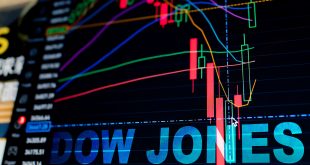Market Drivers – US Session, September 14, 2023
The EUR/USD pair resumed its downtrend, falling to the 1.0630 area. It posted the lowest daily close in months and remains under pressure. EUR/CHF suffered its worst day in months, dropping from weekly highs at 0.9600 to 0.9530, with a crucial support area between 0.9500 and 0.9520.
The US Dollar Index posted its highest daily close since March, above 105.30 on Thursday. US stocks rose, with the Dow Jones gaining 0.96% and the Nasdaq rising 0.81%.
Economic Data
Data from the US showed that the Producer Price Index increased by more than expected in August, with the annual rate rising from 0.8% to 1.6%. The Core annual rate slowed from 2.4% to 2.2%. Retail Sales rose 0.6% in August, surpassing expectations of a 0.2% increase. Initial Jobless Claims advanced from 217K to 220K, below the market consensus of 225K.
Overall, US data shows that the US economy remains resilient and that inflation rebounded in August. However, these numbers did not significantly alter Federal Reserve (Fed) monetary policy expectations. The Fed is widely expected to keep interest rates unchanged next week.
On Friday, data from the US includes the NY Empire State Manufacturing Index, Industrial Production, and the University of Michigan Consumer Confidence survey (September – preliminary).
On Friday, Germany will report the Wholesale Price Index. The Eurogroup meets in Spain, and Eurostat will release Q2 Labor Costs and July trade data.
Key Developments
The European Central Bank (ECB) raised its key interest rates by 25 basis points. However, it was seen as a dovish hike as it signaled that no further rate hikes are likely in the near future. Lagarde’s statement offered no surprises and mentioned that some members preferred a pause at the September meeting. As a result, the Euro lost ground across the board after the statement.
Monetary policy is having an effect and is slowing growth, although the ECB experts still do not expect a recession. Economists assume that the central bankers will indeed not raise interest rates any further. At the same time, however, economists still expect that the ECB will not lower interest rates next year as the underlying inflationary pressure remains too high.
GBP/USD posted the first daily close below the 200-day Simple Moving Average since March around 1.2400. The Bank of England will release its inflation expectations survey on Friday.
Risk appetite offered limited impetus to antipodean currencies. On Friday, China will report Industrial Production and Retail Sales, closely monitoring those numbers.
Despite positive Australian employment numbers, the AUD/USD failed to hold above 0.6450 and lost momentum during the American session.
NZD/USD reached weekly highs but then pulled back towards the 0.5900 area. It continues to move sideways with a slight bullish bias in the short term, although overall sentiment remains bearish.
The CAD outperformed, helped by the extension of the rally in crude oil prices. The WTI barrel rose above $90.00, reaching its highest level since November. USD/CAD lost ground for the fifth consecutive day. It is hovering around 1.3500, and a consolidation below that level could open the doors to more losses.
Gold finished flat at $1,910 after testing the $1,900 area. Silver lost ground but ended at $22.60, far from the one-month low of $22.28.
The New Zealand Business PMI and Chinese statistics that covers Retail Sales and Industrial Production are also due during the Asian session, on Friday. German wholesale inflation, Eurozone labour costs, and the Bank of England’s report on inflation forecasts will all be released later in the day. The Empire State Manufacturing Index, Industrial Production, and the University of Michigan Consumer Confidence survey are among the US statistics that will be made public.
Also Read:
Why is German industry worried about Chinese criticism of EU probe?
Strongest day in 6 months for European stocks on ECB’ signals
Bitcoin price targets $27,000 as bulls ignore PPI data
USD/CAD continues to decline on higher oil prices
 Noor Trends News, Technical Analysis, Educational Tools and Recommendations
Noor Trends News, Technical Analysis, Educational Tools and Recommendations





